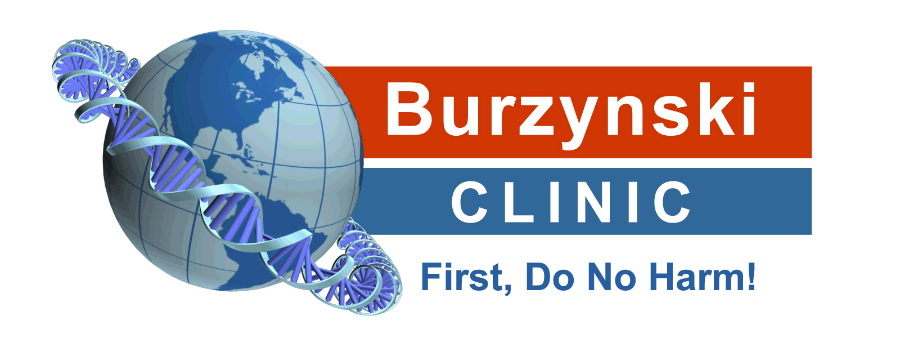Did you know that every year, approximately 300 children are diagnosed with Diffuse Intrinsic Pontine Glioma (DIPG)? This aggressive brain tumor was a death sentence for most until a remarkable case became a beacon of hope. Meet a courageous girl who, at just 3.5 months old, faced one of the rarest and most challenging pediatric cancers and defied the odds with groundbreaking treatment. In this blog post, we’ll explore her incredible journey, the innovative Antineoplaston therapy that contributed to her lasting recovery, and the promise of new horizons in cancer treatment. We'll shed light on DIPG, what makes it so aggressive, and why the success of alternative treatments not only brings hope but also reshapes the narrative around dangerous diagnoses.
Understanding Diffuse Intrinsic Pontine Glioma (DIPG)
Diffuse Intrinsic Pontine Glioma (DIPG) is a rare and aggressive type of brain tumor that commonly occurs in children aged between 5 and 10 years. Located in a critical part of the brainstem, DIPG controls various vital functions, such as breathing and heart rate. Unfortunately, the prognosis for patients diagnosed with DIPG has traditionally been quite grim, with most patients only surviving around 9 to 12 months post-diagnosis.
This devastating statistic is due to the tumor’s invasive nature and the difficulty in surgically removing it without causing significant damage to surrounding brain structures. Moreover, traditional treatments like radiation therapy and chemotherapy have had limited effectiveness, often resulting in minimal prolongation of life rather than a cure.
The Story of a Brave Little Fighter
In the case of one extraordinary girl diagnosed at only 3.5 months, the typical treatment plan presented little hope. The family was devastated but decided not to accept the bleak outlook. Instead, they sought out innovative options that could potentially save their daughter’s life. They discovered Burzynski Clinic and its groundbreaking Antineoplaston therapy, which promised an alternative method for treating her rare and aggressive tumor.
What is Antineoplaston Therapy?
Antineoplaston therapy is a unique treatment approach developed by Dr. Stanislaw Burzynski. It involves the use of small peptides and amino acid derivatives to combat cancer. This therapy aims to restore normal function to cells and help the body eliminate cancer cells without the harsh side effects of traditional chemotherapy and radiation.
The treatment has shown remarkable promise in certain cases, particularly with difficult-to-treat brain tumors like DIPG. While the medical community has debated its efficacy, individual success stories like that of this brave girl offer a real glimpse into the potential of alternative therapies to turn the tide against pediatric cancers.
The Journey Towards Recovery
Upon starting Antineoplaston therapy at Burzynski Clinic, this little girl began to show signs of improvement. Under the careful monitoring of the clinic’s medical team, her clinical signs associated with the tumor began to resolve. The transformation was incredible.
Her journey included numerous tests, routine assessments, and nutritional counseling, all provided at a concierge level of care that made all the difference. Her parents noted that the holistic approach and the personal attention received were invaluable during this challenging time.
Building a Support Network
One critical aspect of dealing with a DIPG diagnosis is building a support network. The emotional burden of caring for a child with cancer is immense, so families should consider reaching out to support groups. Connecting with others who have traveled similar paths provides not just emotional support, but also insights into treatment options and coping strategies.
Support networks can be found through hospitals, cancer advocacy organizations, and even online forums. This extension of community can help parents feel less isolated and more empowered.
Emphasizing Nutritional Health
In addition to the medical treatments, nutritional counseling became pivotal in this little fighter’s healing journey. Eating healthy, nutrient-dense foods bolstered her immune system, supported her body during treatment, and contributed to her overall wellness.
While traditional cancer treatments often lead to loss of appetite or nutritional depletion, focusing on good nutrition can have a profoundly positive impact. This approach highlights the necessity of treating the body as a whole rather than merely targeting the tumor. Incorporating a variety of organic fruits, vegetables, and whole grains, as well as staying hydrated, became essential components of her recovery protocol.
The Outcome: A Powerful Victory
After completing the treatment regimen, the results were remarkable. This brave girl experienced what doctors deemed a ‘complete response.’ Her mobility improved, her cognitive functions returned, and optimistically, it appeared as though she had overcome the odds.
Not only did she celebrate her 23rd birthday; she became an outspoken advocate about her experience, demonstrating how alternative treatments could empower families facing similar diagnoses. Her victory is a testament to hope and the unyielding resilience of children and families battling cancer.
The Importance of Research and Innovation in Oncology
As stories such as hers gain traction, they shine a light on the importance of continuing research and innovation in oncology. While not every patient will achieve the same success, encouraging dialogue about alternative treatments may pave the way for breakthroughs that can save lives.
Recently, there has been a surge in clinical trials and studies aimed at refining and optimizing non-traditional therapies like Antineoplaston therapy. Increased support for these innovative treatments is vital as they may become essential tools in the fight against aggressive cancers like DIPG.
What Does the Future Hold?
The landscape for childhood cancer treatments continues to evolve. The growing number of success stories fuels motivation in the medical community to explore and embrace unconventional therapies. While traditional medicine remains crucial, the inclusion of holistic approaches creates a comprehensive and multifaceted solution.
With each triumph against DIPG and other cancers, there exists a renewed commitment among healthcare providers, researchers, and advocates to ensure that hope prevails over despair.


0 Comments